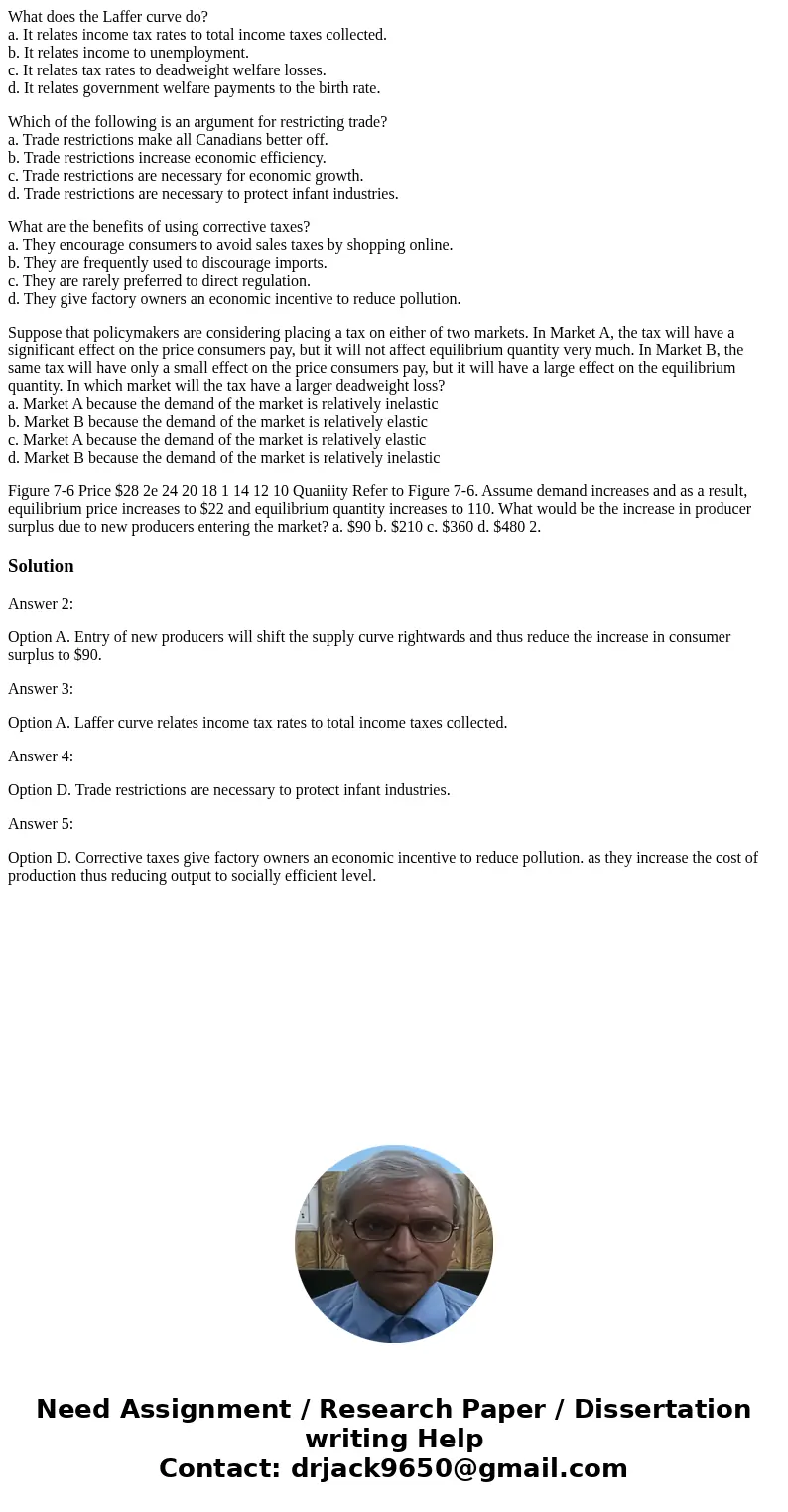What does the Laffer curve do a It relates income tax rates
What does the Laffer curve do?
a. It relates income tax rates to total income taxes collected.
b. It relates income to unemployment.
c. It relates tax rates to deadweight welfare losses.
d. It relates government welfare payments to the birth rate.
Which of the following is an argument for restricting trade?
a. Trade restrictions make all Canadians better off.
b. Trade restrictions increase economic efficiency.
c. Trade restrictions are necessary for economic growth.
d. Trade restrictions are necessary to protect infant industries.
What are the benefits of using corrective taxes?
a. They encourage consumers to avoid sales taxes by shopping online.
b. They are frequently used to discourage imports.
c. They are rarely preferred to direct regulation.
d. They give factory owners an economic incentive to reduce pollution.
Suppose that policymakers are considering placing a tax on either of two markets. In Market A, the tax will have a significant effect on the price consumers pay, but it will not affect equilibrium quantity very much. In Market B, the same tax will have only a small effect on the price consumers pay, but it will have a large effect on the equilibrium quantity. In which market will the tax have a larger deadweight loss?
a. Market A because the demand of the market is relatively inelastic
b. Market B because the demand of the market is relatively elastic
c. Market A because the demand of the market is relatively elastic
d. Market B because the demand of the market is relatively inelastic
Solution
Answer 2:
Option A. Entry of new producers will shift the supply curve rightwards and thus reduce the increase in consumer surplus to $90.
Answer 3:
Option A. Laffer curve relates income tax rates to total income taxes collected.
Answer 4:
Option D. Trade restrictions are necessary to protect infant industries.
Answer 5:
Option D. Corrective taxes give factory owners an economic incentive to reduce pollution. as they increase the cost of production thus reducing output to socially efficient level.

 Homework Sourse
Homework Sourse